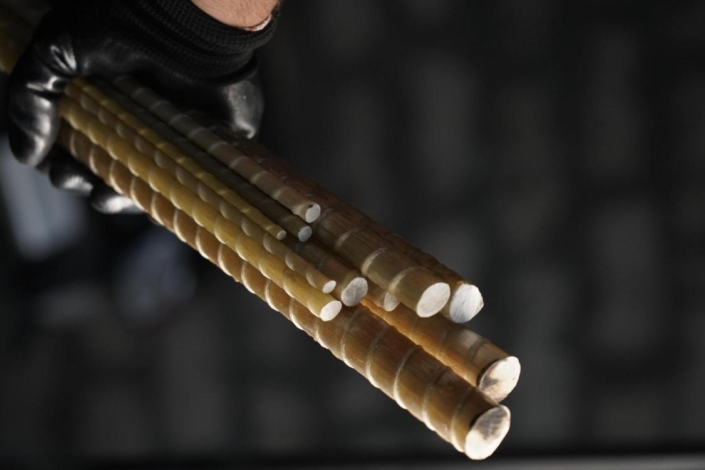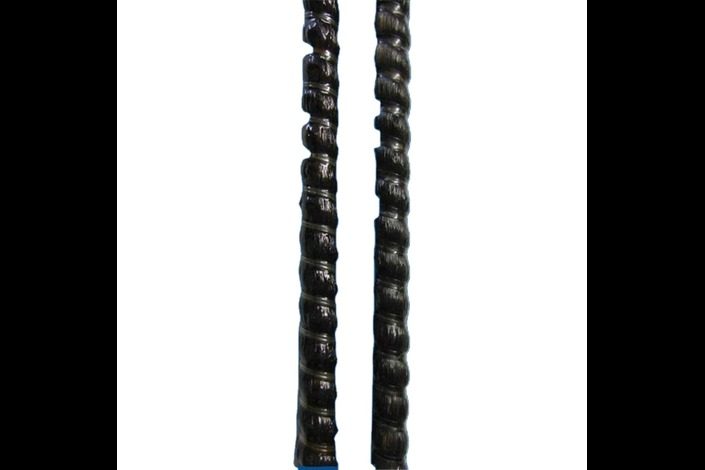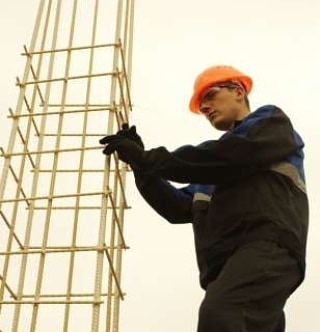What is a glass fiber rebar?
Discover the power of GFRP or glass composite rebar! Unlike traditional steel, this innovative material combines fibers in a specialized substrate. The result? A structure that’s incredibly strong and corrosion-resistant.
ARYAROD CO can produce these composite rebars in a wide range of sizes, from 3mm to 40mm in diameter and up to 12m in straight branch or 100m in coil form. And they offer two grades to suit your needs:
Grade A Yellow – Completely non-conductive for maximum safety.
Grade B Black – Resistant to UV rays and heat, with semi-conductive properties for added durability.
Ditch the steel and upgrade to glass rebar. It’s the future-proof solution for building structures that stand the test of time. Get ready to be convinced by the power of this game-changing material.
The price of GFRP rebar
Are you tired of paying more for steel rebar and dealing with the headaches of fatigue and cracking? The facts don’t lie – glass rebar is the smarter choice for your reinforced concrete projects.
Think about it – glass rebar is consistently cheaper than steel, costing up to $3,300 less per 4400 sq ft of reinforced concrete. And the price is much more stable, so you don’t have to worry about sudden spikes cutting into your budget.
However, the savings don’t stop there. Glass rebars are also more resistant to corrosion, meaning your concrete structures will last longer and require less maintenance down the line. Avoid the costly repairs that come with steel rebar’s susceptibility to fatigue and cracking.
It’s time to make the switch to glass rebar and start enjoying the benefits. Your wallet (and your peace of mind) will thank you. Make the smart, cost-effective choice for your next project.
Comparing the performance of glass and steel rebar
Here is a convincing caption for the given post topic:
Forget steel, glass is the future of reinforced concrete! Our groundbreaking research proves that GFRP rebars outperform traditional steel on every metric that matters.
With a tensile strength of 1300 MPa and a bending strength of 760 MPa, glass reinforcement offers unparalleled structural integrity. Plus, the bending strength of GFRP-reinforced concrete soars to 13.5 MPa – over 4 times stronger than plain concrete.
The proof is in the numbers. GFRP rebars achieve higher strain, greater load-bearing capacity, and superior concrete adhesion compared to steel rebars. This makes them the clear choice for building structures that are safer, more durable, and built to last.
Isn’t it time you made the switch to the concrete reinforcement of tomorrow? The future is glass, and it’s time your projects got on board.
Reinforced concrete with glass rebar
Reinforced concrete structures have long been the industry standard, but the persistent issue of steel rebar corrosion presents a significant challenge that can no longer be ignored. Fortunately, modern technology has provided a compelling alternative in the form of glass fiber-reinforced polymer (GFRP) rebar.
One of the primary advantages of GFRP rebar is its exceptional corrosion resistance. Unlike traditional steel rebar, GFRP is immune to the destructive effects of rust and weathering, ensuring the long-term structural integrity of the reinforced concrete. This not only extends the lifespan of the construction but also eliminates the need for costly maintenance and repair measures associated with corroding steel.
But the benefits of GFRP rebar go beyond just corrosion resistance. These innovative reinforcements also offer superior ductility, with a long strain-to-failure profile that provides ample warning before the structure reaches its breaking point. This allows for proactive monitoring and preventative measures, giving engineers and project managers the time they need to address potential issues before they escalate into catastrophic failures.
When it comes to reinforced concrete construction, the choice is clear. GFRP rebar offers a future-proof solution that addresses the critical shortcomings of traditional steel, delivering unparalleled corrosion resistance and enhanced safety measures. By embracing this technology, we can build stronger, more resilient structures that stand the test of time.
The advantage of glass composite rebar
It has been used for some time as a replacement for glass as a polymer rebar reinforced with glass fibers. GFRP rebar is lightweight, and corrosion-resistant, with excellent tensile strength and mechanical performance. Installation is similar to steel rebar, and it poses fewer transportation and maintenance problems.
Glass rebar compounds
The substrate material, also known as the matrix, is used to reinforce the structure and is evenly described in the substrate. Examples of matrix materials include aluminum, magnesium, nickel, and cobalt.
Various types of mattresses are available in the market. The glass transition temperature (Tg) is a crucial point at which polymers experience a significant decrease in mechanical properties such as strength and hardness with increasing temperature.
It is important to carefully choose the type of matrix or substrate as it must withstand factors such as corrosion, electrical resistance, and thermal resistance which can hinder composite performance.
The material of the substrate of GFRP rebar
The substrate material of GFRP rebar includes well-known matrices such as polyester, vinyl ester, phenol, and epoxy. Each type of glass rebar substrate matrix has its unique qualities.
For example, vinyl ester, which falls under the category of unsaturated polyester, is highly resistant to corrosion and is commonly used in alkaline environments like concrete. Similarly, epoxy matrix is often used in conjunction with vinyl ester for producing FRP rebars due to its excellent mechanical properties and fatigue resistance.
However, it should be noted that polyester matrix does not fare well in alkaline environments and may not provide resistance against them when used as a substrate for FRP rebars. On the other hand, epoxy stands out as the top choice for composites made with carbon glass fibers thanks to its exceptional mechanical properties and fatigue resistance.
Furthermore, it can withstand high temperatures of up to 160 degrees and provides fire resistance of up to 320 degrees when used in concrete structures. Phenol is the go-to matrix for applications where high fire resistance is crucial because of its ability to withstand intense heat and produce less smoke upon contact with fire, thereby preventing further spread.
Rebar suitable for marine structures with epoxy resin
Epoxy resins used in the production of GFRP or glass composite rebar are highly resistant to chemicals such as acid, salt, and water, preventing corrosion of the rebar. Due to their high strength, these rebars are ideal for structures exposed to moisture and especially salt water. These rebars improve the stability of bridge decks and piers, as well as most marine structures.





